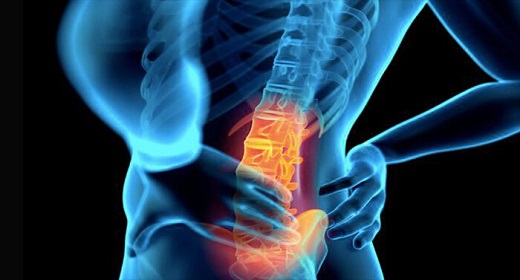Love having a drink? Then you’ll love the surprising health benefits of red wine…
Wine is one of the most popular beverages in the world. Often, it is paired with meals.
In 2014 alone, the U.S. Alcohol and Tobacco Tax and Trade Bureau (TTB) reports that Americans consumed 892 million gallons of wine.
Most wine is consumed for enjoyment.
Recently, science has discovered more about red wine’s health benefits. This has put more interest in the beverage.
Not that we need any more encouragement to drink it…
Based on the TTB’s figure above, we can estimate that the average American uses 2.8 gallons of wine in a year. That’s quite a bit.
Of all that, close to 770 million gallons were for table wine. This kind of wine makes up the majority of the $37.6 billion in total sales that the wine industry did in 2014.
It’s also worth noting that both the consumption figures and total wine sales have increased over the years. And, it looks like they will continue to do so.
At least for the near future.
How is Red Wine Made?
Red wine comes from grapes.
But, not all kinds of grapes can be used to make wine.
This means you can’t just go to the supermarket and pick out a bunch of grapes. Then, go and stomp the juice out of them like you see in the movies.
For red wine, dark colored grapes are used.
These are mostly the black grapes. Though, there are many different varieties are available.
Making Wine from Grapes
Simplistically, the wine making process is broken into 3 main parts.
- The wine makers first collect the grapes.
- Later, they crush the grapes.
- Then ferment them before bottling.
What gives wine most of its color isn’t the juice of the grapes or the meat itself. Instead, it is their skin. The skins often have that bluish or reddish tint that makes almost all of red wine’s color.
Even with red wine, taste and color can vary.
The final color of your wine depends on many factors.
These include the variety of grapes, their environment, soil, and weather. It also depends on how ripe the grapes were when they were picked and their fermentation process.
By changing one or more factors, you get different flavors.
How Wine is Made: From Grapes to Bottle
As you probably know, there are many red wines available. The more popular ones include Pinot Noir, Merlot, Cabernet Sauvignon and Zinfandel.
It’s also worth noting that wine often contains between 12% and 15% alcohol content. This makes it more potent than beer as far as alcohol content goes.
Health Benefits of Red Wine
If you’re a red wine drinker, you’ll be happy to hear this. Drinking this alcoholic beverage in small amounts, helps make you healthier.
1. Red Wine Helps Lower Your Cholesterol
One of the most important benefits of red wine is it improves your cholesterol and lipid profile.
Red wine works by lowering your low density lipoprotein, or LDL cholesterol. This is the bad cholesterol.
At the same time, it maintains your good cholesterol. The good cholesterol is your the high density lipoprotein (HDL) cholesterol.
Some research note seeing increases in HDL cholesterol levels as well.
Here’s a quick explanation on what each type of cholesterol does.
- HDL cholesterol helps in clear up plaque from your blood vessels. This allows blood to be easily transported to our organs. It also prevents the blood vessels from getting clogged.
- LDL cholesterol meanwhile are what cause the buildup. This buildup narrows the passages whereby blood circulates throughout our body. It does this by collecting on the walls of our blood vessels. This later becomes plaque, which reduces the size of the blood’s pathways.
A study in the Nutrition Journal mentions red wine’s role in improving cholesterol.
In it, red wine, along with lifestyle changes, exercise and the Mediterranean diet improved the HDL to LDL ratio of patients with carotid atherosclerosis. All patients already had narrowing arteries when they started the program.
Compared to a group that didn’t follow the regimen, the red wine group showed a 7% drop in LDL cholesterol. They also experienced a 6% drop in total cholesterol and a 13% decrease in triglycerides.
Among red wine’s benefits is its antioxidant content. This comes from the grapes, specifically their skin.
Among the many antioxidants present, resveratrol stands out. It works to fight inflammation and protects the heart from free radicals.
Note that the HDL and LDL cholesterol benefits only work with red wine. White wine hasn’t showed the same ability.
2. It Protects Your Heart
Red wine improves both HDL and LDL cholesterol.
Additionally, research shows that it also cuts your risk of cardiovascular disease. It does this by:
- Improving your blood pressure.
- Reducing and preventing blot clots from forming.
Drinking small to moderate amounts helps protect the heart and the blood vessels.
This allows the heart to pump blood efficiently. And, let the blood vessels deliver blood to and from it.
Both the alcohol and the non-alcohol components help in lowering your risk of cardiovascular disease.
- The alcohol helps us relax.
- The grapes, including its skin and the seeds, contain antioxidants.
These antioxidants play an important role in preventing heart disease and stroke.
Research tells us that drinking 400 ml of wine daily helps reduce oxidative stress. This is the kind of stress that’s linked to age related illnesses.
The good news is, red wine helps no matter how old you are. In the study, young (18-30 years old) and old (50 years and older) subjects benefited from it.
The bad news is, among the alcoholic drinks, wine seems to be the one with more benefits.
Beer for example, doesn’t help. Researchers noted that drinking 150 ml of wine daily helped cut heart disease risk. But, beer didn’t show the same results.
To end, the study tells us that drinking larger amounts of wine negates its positive effects. Not only that, in excess, you reverse all the benefits and increase your heart disease risk.
As a guideline, having 1 to 2 drinks a day shows the best results. It offers the lowest risk of stroke along with the heart protective benefits we’re all after.
3. It Helps Control Blood Sugar
A study by the University of Sydney in Australia has some proof on this.
It shows that drinking alcohol with a meal or 1 hour before a meal lowered post-meal glucose levels.
In both cases, post meal glucose was lower compared to drinking water with the meal.
Among alcoholic beverages, drinking wine with meals had the best results. It produced the lowest post meal glucose levels.
This led to the conclusion that enjoying an alcohol drink along with meals is beneficial. It may reduce the effects of blood sugar spikes after eating. Being able to do so makes it protective against chronic illnesses.
Considering that we consume more than our fair share of sugar and soda, this is a welcome benefit. Instead of reaching for a soda, try a glass of wine instead with dinner.
4. Drinking Red Wine Reduces Insulin Resistance
Insulin resistance is a topic that’s related blood sugar control.
And wine can help here too.
The polyphenol content in wine is beneficial to anyone with insulin resistance.
To explain, insulin resistance is a condition where the body doesn’t respond to or has a lessened response to insulin.
This is often a stage that’s a precursor to type 2 diabetes.
Insulin sensitivity, its opposite, is what’s normal and healthy. This sensitivity is what allows our body to use the glucose that’s converted from the food we’ve eaten.
When our body becomes resistant to insulin, glucose in the body can’t go anywhere. So, it continues to stay in the bloodstream. As a result, we experience high blood sugar levels. Left untreated, this will turn into diabetes.
Studies show that wine helps healthy, non-diabetic men and women improve their insulin resistance. In the experiments, the subjects drank 30 grams of red wine daily. Thirty grams is about 2 drinks.
Besides insulin resistance, the participants also saw their HDL cholesterol and triglycerides improve. This shows the protective effects of the plant polyphenols found in red wine.
The same holds true for type 2 diabetic patients. In this case, drinking red wine for 2 weeks helped improved insulin resistance.
5. It Lowers Your Risk of Type 2 Diabetes
The next time you’re asked, “red or white wine?”
Go with red.
Red wine has 12 times more polyphenols than white wine. Its high polyphenol levels make it a better choice when it comes to pairing with meals.
Additionally, red wine contains a special substance, resveratrol. This compound offers many healthy benefits.
Among them is its ability to regulate blood sugar.
Resveratrol and the other non-alcohol components in red wine help ward off type 2 diabetes. They do this by controlling the level of glycemia as well as reducing oxidative stress.
Evidence also points out that moderate wine consumption cuts your risk of type 2 diabetes.
But, high wine consumption, even for 3 or less days a week can increase that risk.
6. It Protects and Boosts Your Brain
Most people will associate alcohol with forgetting what they did the night before. But this only happens with binge drinking.
In moderate to light amounts, red wine protects our cognitive abilities from age related conditions. It also helps improve memory performance and thinking.
Also among red wine’s benefits is it protects us against dementia and Alzheimer’s disease.
How?
Resveratrol.
This is an antioxidant found in the skin of grapes. It plays a key role in preventing plaque formation in our brains. Research tells us that this plaque is present in patients suffering from Alzheimer’s disease.
It’s worth noting that these same antioxidant properties also protects us from cell damage as well.
In a related study, French researchers found that having 1 to 3 drinks of wine daily cuts you risk of dementia.
Another study in the Netherlands confirms this. In close to 8,000 individuals, aged 55 years or older, light to moderate alcohol consumption (1 to 3 drinks daily) cut the risk of dementia and Alzheimer’s disease.
For a boost in brain power, you’ll be happy to know that red wine also improves memory. Again thanks to resveratrol’s antioxidant properties.
In the same light, drinking wine helps keep our mind sharp as we age.
The University of Tromsø in Norway found this out through a 7 year long study. In it, participants who were light to moderate wine drinkers did better in cognitive tests.
7. Red Wine has Cancer Fighting Properties
Plant based polyphenols found in grapes help fight free radicals.
This prevents oxidative stress, which can lead to diseases like cancer.
Among the polyphenols found red wine are resveratrol, quercetin and proanthocyanidins.
Thanks to them, drinking 1 to 2 glasses of wine each day lowers the likelihood of prostate, ovarian, colon and skin cancers.
Chinese researchers also point out that resveratrol can inhibit the proliferation of tumor cells. This makes red wine helpful in preventing and fighting cancer.
The good news is resveratrol isn’t only present in red wine. Other foods that contain this antioxidant include grapes, berries and peanuts.
Do note that despite its benefits, the American Cancer Society doesn’t recommend non-wine drinkers to start. This is because wine can easily be abused.
If you do drink alcohol, men should limit themselves to 2 drinks a day. Women to one drink a day.
This is the ‘sweet spot’.
At 1-2 drinks daily, you get the health benefits of wine without its negative effects. This includes its ability to fight cardiovascular disease and cancer.
8. Red Wine Consumption is Linked to Longer Life
Red wine cuts your risk of heart disease and other cardiovascular problems.
It keeps our minds healthy and our bodies free of cancer.
All this contribute to letting us live a longer, healthier life.
The polyphenol content in red wine also prevents chronic diseases. Thanks to this, we not only live longer but also have better quality of life.
Long term research shows that moderate wine drinkers have a lower mortality risk compared to non-wine drinkers.
In plant studies, resveratrol helped prolong the life yeast, fruit flies and worms. It also slowed down their aging process. The compound likewise improved the survival rate of mice.
Of course, there is no proof of this for humans. At least not yet.
So, before we hail red wine or resveratrol as the elixir of life, we’ll have to settle for what we know now. It reduces chronic disease, our risk of heart disease and cancer.
That’s pretty good.
9. Enjoy it for Healthier, More Beautiful Skin
There are many antioxidants found in red wine and its grapes.
But, the one that gets a lot of attention is resveratrol.
So much so, that it has turned itself into a multi-million dollar industry in a short period of time.
Resveratrol is now found in many health supplements. It is also present in many skin and beauty products.
You’ll easily find it highlighted in the label of containers.
This is because of its anti-aging, anti-inflammation and metabolic regulation ability.
When it comes to beauty and our skin, the anti-aging properties of this compound is what people are after.
Its cardiovascular protective properties comes from the increased production of nitric oxide. In doing so, it helps prevent degenerative diseases.
Resveratrol also helps keep our skin young by protecting it from damage. Its antioxidant properties protect our skin from age related disorders.
Some studies show that the compound has potential against certain skin diseases too.
10. It Helps You Keeps the Weight Off & Stay Slim
Another beauty benefit to drinking red wine is it helps you keep the extra pounds off.
As we get older, our body’s cells and tissues become less efficient in doing their jobs. This leads to weaker bones, less muscle mass and slower metabolism.
Among the results of these changes is weight gain.
Aging, being inactive and sitting behind the desk all day are major culprits. These are among the main reasons we all gain weight as we get older.
Drinking red wine in moderation has been shown to help us stay slim.
It may not be that magic weight loss pill we all wish for. But, it does provide a silver lining. This is true for anyone who moderately drinks this alcoholic beverage.
The Brigham and Women’s Hospital in Boston observed this in a study. The study involved women who were over the age of 38 years old and had normal body mass index (BMI). A normal BMI is between 18 and 25.
The results show that women who drank alcohol gained less weight over a period of close to 13 years. Those who drank little to moderate amounts of alcohol gained less weight than non-drinkers. They were also less likely to become obese or overweight.
11. It Reduces Your Risk of Depression
A lot of people turn to alcohol to drown their sorrows.
It’s ironic that drinking red wine, in small to moderate amounts, helps prevent depression.
The Mayo Clinic has the following definition of depression.
It is “a mood disorder that causes a persistent feeling of sadness and loss of interest.”
Thus, it is more than feeling down or blue for a short while. Instead, it is more long term related.
In the U.S. alone, there are 14.8 million Americans suffering from depression. This is according to the Depression and Bipolar Support Alliance (DBSA). This figure is close to 7% of the entire U.S. population.
What’s dangerous about depression is that it can often lead to other health issues. Plus, it can affect or worsen any medical condition you may already have.
A study in BMC Medicine, shows a link between depression and alcohol consumption.
To do so, they conducted the study with a group of more than 5,500 high risk individuals. In the end, they discovered that drinking 2 to 7 drinks a week offers the lowest risk of depression.
Remember to Drink in Moderation
As much as we love the benefits of red wine as listed above, you always have to remember one thing. Red wine is an alcoholic drink.
This means it is important to consume it in moderation.
In excess, you can quickly reverse any of the gains. Plus, you end up harming yourself.
Also, there’s the risk of alcohol addiction.
How Much Red Wine is Too Much?
Understanding how much alcohol we should consume isn’t always simple. You can’t just count the number of empty bottles.
Why?
Alcoholic beverages contain varying amount of alcohol.
For this reason, Alcohol by Volume (ABV) is a better way to compare different drinks.
ABV is a measure of how much the alcohol content is in a given beverage. The number is based on the percentage of the total volume in the container.
As an example, here are some common alcoholic beverages and the ranges of their ABV.
| Drink | % Alcohol Content |
| Wine | 9% to 16% |
| Beer | 2% to 12% |
| Whiskey | 40% to 68% |
| Gin | 40% to 50% |
| Brandy | 35% to 60% |
| Vodka | 35% to 50% |
| Malt Liquor | 5% or so |
| Rum | 37.5% to 80% |
| Cider | 2% to 8.5% |
This means we can’t just compare a glass of wine with the same sized glass of tequila. Then say they’re the same amount. The reason being that their alcohol content varies by a lot.
Wine only goes up to as high as 16% alcohol while tequila all the way up to 60%.
What’s important is to count the actual amount of alcohol.
To do this we need to be aware of the alcoholic content of your drink.
One Standard Drink
The National Institute on Alcohol Abuse and Alcoholism has an easy guide you can follow. It uses what’s called the one “standard drink”.
In the U.S., one standard drink is about 14 grams of pure alcohol.
This means that one standard drink amounts to:
- One regular beer (which has around 5% alcohol): One 12 oz. can or its equal.
- With wine (which has about 12% alcohol): One 5 oz. glass of wine.
- For malt liquor (which has 7% alcohol): One 8 oz. glass.
- For distilled spirits. This includes vodka, gin, rum, tequila, whiskey (which have around 40% alcohol): One 1.5 ounce shot.
Knowing how much amounts to “one drink” is essential. This way you know how much you can drink.
The NIH puts the amounts at:
- For men, limit your alcohol intake to 1 to 2 drinks each day.
- For women, the limit is one alcoholic drink each day.
For Non-Wine Drinkers
If you aren’t already a wine drinker, there’s no need to start now.
The American Heart Association doesn’t recommend you start drinking wine to get its benefits.
They actually discourage you from starting. This is because they believe that the benefits don’t outweigh te risks.
The risk is not being able to control the amount of alcohol you consume.
Instead, you may look at other food alternatives.
There are many foods that contain resveratrol. This is the compound responsible for most of red wine’s benefits. This way, you get the benefits without the alcohol.
Foods rich in resveratrol include:
- Dark chocolate
- Red grapes
- Blueberries
- Cranberries
- Peanuts & peanut butter
Or, you can opt to get them through resveratrol supplements.
Conclusion
The many health benefits of red wine gives us something to cheer about. Alcoholic beverages are often thought of as unhealthy.
Red wine, through its grapes, offers a good number of antioxidants. These help improve quality of life and prolong it too.
Like all alcohol, the most important thing is to drink in moderation. Limiting yourself to 1 to 2 glasses per day is the best way you get the most benefits without its side effects.






















































